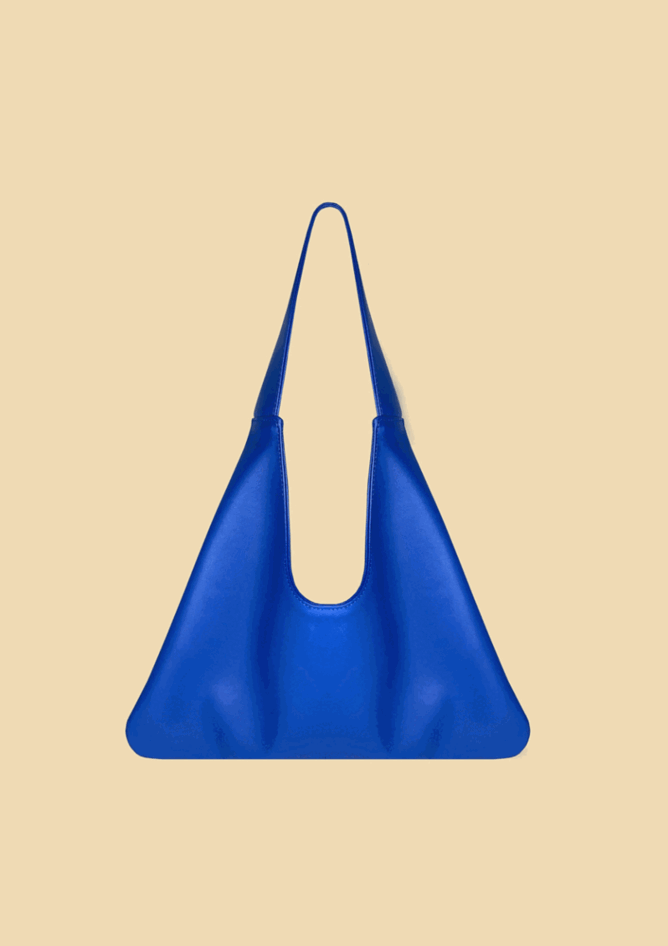How Innovative Sustainable Materials Are Transforming the Fashion Industry
Stella McCartney SS22
Throughout history, our clothing has served as a form of self-expression, protection against the elements, and as a symbol of social status. But our relationship with clothing has evolved over time, first as it became a centralized industry, and now with fast fashion dominating the industry in recent years. Both of these major paradigm shifts were aided by the development of synthetic, petroleum-based fibers like nylon and polyester in a DuPont lab in the early 20th century. Upon invention, they served a purpose as cheap, easy to produce, and sufficiently durable. They lacked the need for agricultural resources and democratized clothing production. However, as we now know, these materials are essentially plastic derivatives and do not break down, and it follows that the more these are produced and consumed, the further we burden our planet. In our generation, these fibers have been normalized to the point where we susty baddies have to actively search for clothing items that don’t have them. That’s why the development and use of innovative sustainable materials are at the forefront of the movement for fashion reform, and it’s incredibly exciting to see how brands, textile manufacturers, and designers are working to reinvent the industry!
If you look around inside the top, pants, or dress you’re currently wearing, you’ll likely find a little white tag that tells you what materials make up that garment, which is useful information for us to know about our clothing’s environmental impact. But what it doesn’t tell you is how those materials were sourced, how the production of that material may have affected a garment worker’s life, or what will happen to it if you decide to add it to the donation pile. This seems like a lot to expect from a quarter-sized label, but these are nonetheless valid questions about how the materials used in the fashion industry contribute to issues in the overall supply chain and production process. The world of fashion is infamous for its excessive use of natural resources, creation of waste and pollution, and unethical treatment of garment workers.
Additionally, the historical use of animal-derived materials has been one of the most controversial aspects of fashion for decades. While some argue that materials like leather and silk can be sustainably produced, it's crucial that we acknowledge the harm to living creatures necessitated by their production and consider the unsustainable demand for them in today's economy. This has led many to look towards traditional organic materials like cotton and linen, which are not animal-derived. However, these materials have their limitations. On one hand, they are renewable and biodegradable, making them a more sustainable choice than synthetic materials. On the other hand, the production of these materials often requires large amounts of water and pesticides, which can negatively affect the environment and the health of workers. If we are to see fashion production transformed, we need to consider the ethical implications of our fashion choices and demand greater transparency and accountability from the industry.
Considering these multitudes, sustainable materials have the potential to transform the future of fashion into one that prioritizes ethical production, resourcefulness, and the well-being of our planet over profit. These materials can help to reduce waste from fabric production and garment disposal and they themselves can become repurposed materials at the end of their lifecycle. Smaller brands that have begun to implement the use of these materials are inspiring fashion giants to change the way they see and work with materials. Major brands and fashion houses have the power to end the dominion that consumptive and non-recyclable fabrics have over the industry by normalizing these materials in their production processes.
So, what exactly qualifies a material to be labeled as sustainable? There are a number of factors to consider when assessing the sustainability of a material, but we can look at a material's circularity, its sourcing, and its levels of resource consumption to determine its sustainability. A circular material can be reused or repurposed at the end of its life, reducing waste and the need for virgin materials. For example, some companies are experimenting with mushroom leather, a material made from mycelium that can be grown and harvested. When the material is no longer needed, it can be composted, returning nutrients to the soil. Sustainable materials should also be sourced from renewable resources like bamboo or from waste streams like recycled cotton and should prioritize minimal resource consumption. (For context, the fashion industry consumes 79 trillion liters of water annually, contributing to about 20% of industrial wastewater.)
Fortunately, there is an abundance of innovative sustainable materials already available and in circulation and even more in development stages! If you’d like to learn more about a few of the materials currently taking the industry by storm we’ve compiled a list of 11 Innovative Sustainable Materials and Fabrics to Look For just for you! Materials like the ones we’ve listed offer a new life to waste streams by turning them into clothing and actively work to change the industry standards on ethical production and the life expectancy of our clothing.
The movement towards creating sustainable textiles is international. We're seeing materials like flower leather being developed in India while materials like Appleskin are taking off in France. These material developments are not only innovating the textiles clothing are made of but also the process of design as designers find new ways to mesh the fabrics and textures of these materials. Brands like Viròn, Ganni, Santos by Monica, Mansur Gavriel, and Iris Van Herpen are just a few who have begun to work and incorporate these materials into their products. And it doesn’t stop there; using sustainable materials can inspire brands to take their production sustainability a step further and implement carbon capture programs. The fashion industry contributes significantly to greenhouse gas emissions. Carbon capture programs help reduce these emissions by capturing carbon dioxide from the atmosphere and storing it or utilizing it in some way. Several brands have implemented carbon capture programs as part of their sustainability efforts. For example, Patagonia has implemented a program called "Regenerative Organic Certification" that includes carbon capture and storage practices. Another example is materials science brand PANGAIA, which has partnered with a company called AirCarbon that produces a biodegradable and compostable material made from methane gas, which would otherwise be released into the atmosphere. Even luxury fashion houses like Stella McCartney have implemented a carbon capture program as part of their efforts to reduce their carbon footprint. The brand has partnered with a company called Bolt Threads, which produces a sustainable alternative to traditional silk called Microsilk. Microsilk is made by fermenting yeast to produce a protein that can be spun into fibers.
Stella McCartney SS22
Despite the benefits of sustainable materials, there are still several challenges and barriers that need to be addressed in popularizing the adoption of these textiles. One of the most significant barriers is cost and accessibility. Sustainable materials can be more expensive than traditional materials, making them less accessible for consumers and brands and making it more likely that they will choose cheaper unsustainable alternatives. There is also a need for education and awareness around which materials are truly sustainable, as the widespread use of greenwashing and terms like "vegan leather" can often be misleading. For example, rayon is a popular cellulose fiber made from wood pulp that has been used as a substitute for silk. Though it’s more sustainable than synthetic materials, it still requires heavy chemical washing to be produced. Finally, overconsumption and throwaway culture also pose significant challenges to the adoption of sustainable materials, since at present, there is a market for huge amounts of clothing to be produced.
We love to see the fashion industry finally moving in a direction that prioritizes the planet and its people. Sustainable fashion is not a trend, but a necessary shift that we all need to embrace! By investing in innovative sustainable materials and reducing our consumption and disposal of clothing, we can transform the industry and create a future where fashion remains a beautiful and creative outlet but also prioritizes ethics and responsibility. We have the power to demand sustainable options, support brands that prioritize sustainability, and ask that industry players also step up and take accountability for their impact on the environment. The future is a baddie, and she's sustainable!





